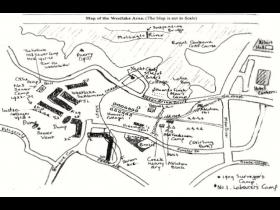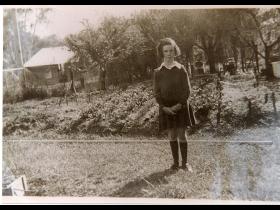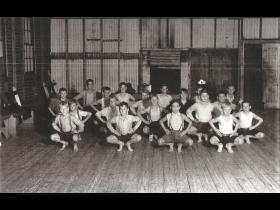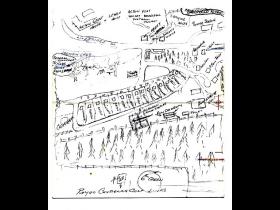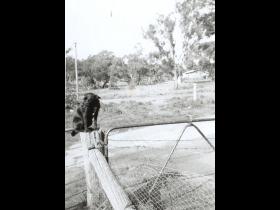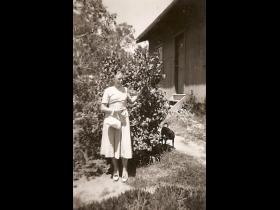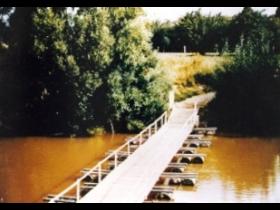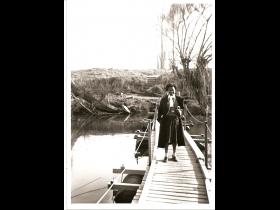Ann Gugler
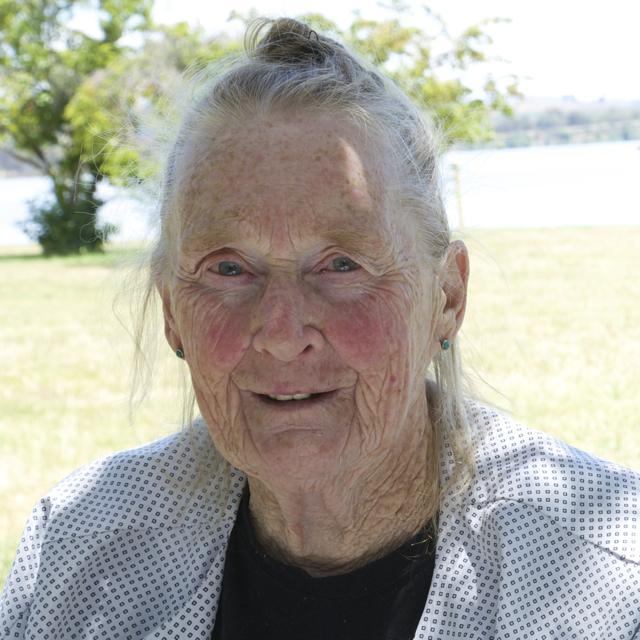
Past Resident of Westlake cottage no. 27
Maiden name: Austin
Interview: With Patricia Frei, December 2013
My name is Ann Robina Gugler (nee Austin). My parents were Violet and Leonard Austin. I came to Canberra in 1941 just before Easter from northern NSW. We lived for a little while with the Dunn family in Kingston - housing was very short, then we got a house at 27 Westlake. Apart from the time I was away at Sydney Teacher's College, I lived there with my family until 1959.
In the 1920s Westlake site stretched from the western side of Capital Hill to the Stirling Ridge Yarralumla in Stirling Park and back from the River to Red Hill. Westlake was isolated. It was one of the temporary settlements and was designed by H. M. Rolland. The first cottage was constructed there in 1924. The settlement had 61 houses, and they were the first cottages built for construction workers. It was actually part of a much bigger settlement in the 1920s when the provisional parliament house was being constructed. The cottages were unlined and they were cold. They were also painted green to blend in with the landscape (or rather to hide them). The other ones that fitted into this same picture were at the Causeway and Molonglo - the ex internment camp that was converted into cottages in the 1920s. There were also the single mans Capital Hill camp and causeway camps and so on.
As people left in the late 1950s and 1960s our cottages were sold and moved. There are still a number of these (along with those from Acton) still existing, some in Queanbeyan and possibly one went all the way down to the South Coast. The Acton Cottages were also designed by Roland, and also constructed in 1924, but they had brick chimneys, which meant they were much warmer. Very few Acton kids came across to Westlake or Westridge. We were isolated, but you knew each other and of course Bonfire night was burning down each other's bonfires - that was par for the course. Acton, which was one of the first areas settled by Europeans is an important Ngunawal place and in the teen years of the last century became the administrative centre of the federal city. It was still the home of the Department of the Interior into the early 1960s and perhaps later. Incidentally, Acton from around the 1920s until around 1963 included Westlake on the south side of the Molonglo River.
I think that because this is such a new city that people come from other places and they bring with them their memories and their history and their history belongs elsewhere. I think it's sad that alongside the Federal history we are not teaching local history in our schools. I think time and money and resources needs to be spent on bringing together these histories. Canberra is beginning to be a city that is the capital of Australia, but we can still collect the stories of its beginnings to help give a basis for memories and understanding. That then becomes our history.
Ann Gugler has worked tirelessly over many years collecting and publishing stories on the old community of Westlake. Her area of expertise is the early construction era between 1909 and early post World War 2, and her research has been published in a number of books and articles. Some of her many publications include: The Builders of Canberra 1909-1929 (1992), True tales from Canberra's vanished suburbs of Westlake, Westridge & Acton (1999), Westlake - one of the vanished 'suburbs' of Canberra (1997) and A Story of Capital Hill (2009).
She also has several websites that contain a wealth of information and images. See www.earlycanberra.webs.com / www.hiddencanberra.webs.com / www.canberracamps.webs.com
